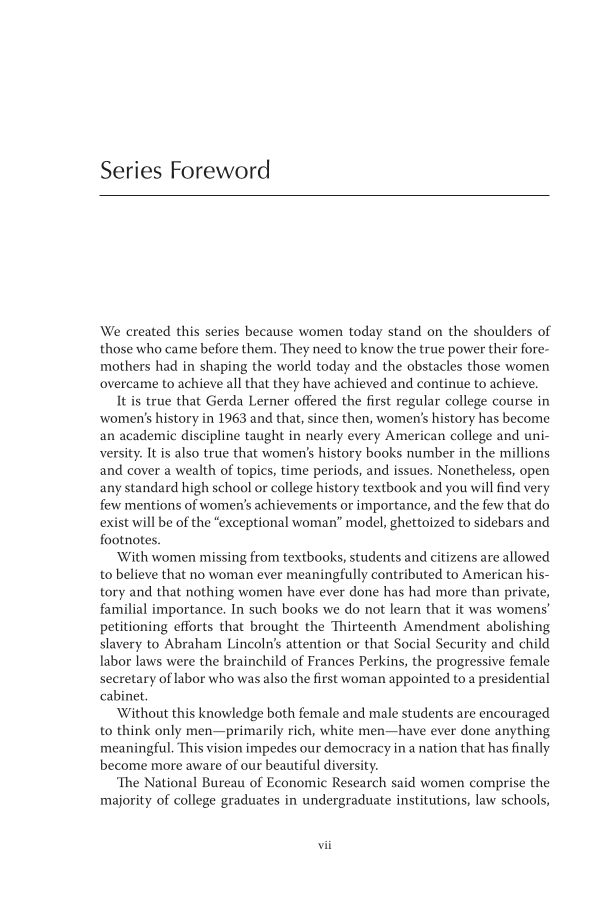vii Series Foreword We created this series because women today stand on the shoulders of those who came before them. They need to know the true power their fore- mothers had in shaping the world today and the obstacles those women overcame to achieve all that they have achieved and continue to achieve. It is true that Gerda Lerner offered the first regular college course in women’s history in 1963 and that, since then, women’s history has become an academic discipline taught in nearly every American college and uni- versity. It is also true that women’s history books number in the millions and cover a wealth of topics, time periods, and issues. Nonetheless, open any standard high school or college history textbook and you will find very few mentions of women’s achievements or importance, and the few that do exist will be of the “exceptional woman” model, ghettoized to sidebars and footnotes. With women missing from textbooks, students and citizens are allowed to believe that no woman ever meaningfully contributed to American his- tory and that nothing women have ever done has had more than private, familial importance. In such books we do not learn that it was womens’ petitioning efforts that brought the Thirteenth Amendment abolishing slavery to Abraham Lincoln’s attention or that Social Security and child labor laws were the brainchild of Frances Perkins, the progressive female secretary of labor who was also the first woman appointed to a presidential cabinet. Without this knowledge both female and male students are encouraged to think only men—primarily rich, white men—have ever done anything meaningful. This vision impedes our democracy in a nation that has finally become more aware of our beautiful diversity. The National Bureau of Economic Research said women comprise the majority of college graduates in undergraduate institutions, law schools,
Document Details My Account Print multiple pages
Print
You have printed 0 times in the last 24 hours.
Your print count will reset on at .
You may print 0 more time(s) before then.
You may print a maximum of 0 pages at a time.
























































































































































































































